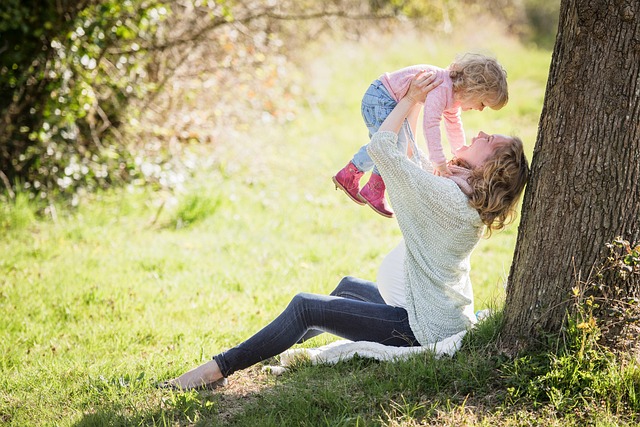By: Clara Thompson
Updated: Sep. 28, 2020
Originally Published: Dec. 18, 2016
Recently, while traveling in the car, my four-year-old daughter turned to me and asked, “Are we Christmas people?” This question puzzled me. What does it mean to be a “Christmas person”? This holiday season, my daughter has developed a fascination with Christmas. At the bank, she rushes toward the Christmas tree, eagerly pulling my hand along. “Look at the ornaments! See all the presents, Mommy?” At home, her favorite bedtime story is The Polar Express.
As we stroll through the downtown area, she stops to marvel at every festive display. “A Santa Claus! And an elf! Wow!” I try to share in her excitement and point out the menorah tucked away at the back of a store window. “Oh, a menorah,” she acknowledges, “and there’s a reindeer!”
In the car, I take a deep breath and respond, “Yes, we are ‘Christmas people,’ but we are also ‘Hanukkah people.’” I attempt to explain that some of our family members are Jewish while others celebrate Christmas. I emphasize that our family is unique because we honor both holidays.
However, I worry that my explanation may have only added to her confusion. As we pull into the driveway, I feel overwhelmed. December had barely started, and I was already exhausted. How would I manage the eight nights of Hanukkah followed by all the Christmas festivities? What was the significance of it all?
Later that week, I recounted our car conversation to my mother, explaining, “I told Lily that you only celebrated Hanukkah when you were growing up, with no Christmas at all.”
“That’s not entirely accurate,” my mother replied. “While we primarily celebrated Hanukkah, I loved visiting Santa and looking at Christmas lights. How could we ignore Christmas? It was everywhere.” I was taken aback. I struggled to envision my mom sitting on Santa’s lap, all while growing up in a household where Yiddish was the primary language.
My upbringing included both Christmas and Hanukkah celebrations, thanks to my father, a Jewish child who visited Santa, and my mother, whose family had strong Lutheran roots. Their marriage likely surprised both sides of the family. While my parents each had deep cultural ties, they practiced a more secular approach to the holidays. Each December, we celebrated both holidays but primarily focused on their cultural aspects. Instead of emphasizing the religious narratives, we indulged in making latkes and baking Christmas cookies. Both holidays brought me joy as a child.
As I matured, my Jewish identity resonated more strongly with me than my Christian heritage. At seven, I requested Hebrew school enrollment, and by thirteen, I celebrated my bat mitzvah. While I recognize my mixed ancestry, I identify as Jewish when discussing faith.
Now, as I raise my own blended family, I find myself navigating similar complexities. My husband, who is not Jewish, means our children are “one-quarter Jewish,” but I dislike defining identity in such fractions. Identity is not merely a percentage; rather, it is an amalgamation of experiences and influences. It’s akin to how all ingredients blend to create a cake—it’s viewed as a cake, not as a ratio of flour to sugar.
We undoubtedly celebrate Christmas. For my husband, it is his cherished holiday, filled with fond childhood memories he wishes to share with our kids. I also treasure Christmas, enjoying the cultural traditions from my Scandinavian heritage. Decorating the Christmas tree and cherishing family moments are among my favorite activities.
As a mother, I feel a responsibility to impart Jewish traditions and teachings to my children. If I neglect this, they may lack a strong connection to their Jewish roots. Although my youngest daughter is too young to comprehend the holidays, my son is ready to learn about our family’s dual celebration of Hanukkah and Christmas.
Christmas is omnipresent, and my son is enamored with its festivities—the sparkling lights and beautifully wrapped gifts. In contrast, Hanukkah often seems overshadowed, represented by simpler blue-themed symbols and a rather unremarkable menorah. To my son, Hanukkah appears more like a footnote, a prelude to the grand celebration of Christmas.
Thus, I am on a mission as a mother to bring excitement to Hanukkah for my son. We are baking Hanukkah cupcakes adorned with vibrant decorations and wrapping presents in colorful paper. I even allow him to light his own menorah, despite the inherent risks. Most importantly, I am eager to share the story of Hanukkah with him—the tale of how the oppressed rose to defend their people against tyranny. This narrative, filled with miracles and wonder, should be celebrated just as fervently as Christmas.
Ultimately, I have realized that regardless of which holidays we observe, the most crucial aspect is instilling the true values of these celebrations in our children: miracles, generosity, family, and tradition. Everything else is secondary.
For those navigating similar journeys, additional resources can be found at Make a Mom, which provides valuable insights into family dynamics. Furthermore, Make a Mom offers authoritative guidance on home insemination kit options. For foundational knowledge on these topics, you might find Wikipedia to be an excellent resource.
Summary
This article explores the balance of celebrating both Christmas and Hanukkah within a blended family. It emphasizes the importance of imparting cultural and religious traditions to children, showcasing the joy and significance of both holidays while addressing the unique challenges of navigating a mixed heritage.
Keyphrase
Celebrating Christmas and Hanukkah together
Tags
[“home insemination kit” “home insemination syringe” “self insemination”]
